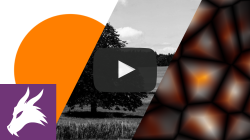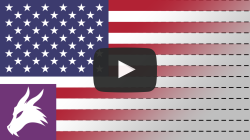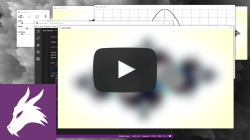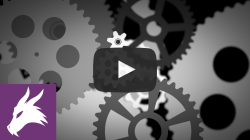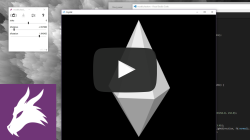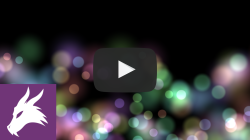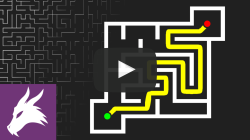Shadron tutorials
I have released several video tutorials on YouTube, which might help you learn to efficiently work with Shadron. Here is a list of them in order of difficulty.
Introduction tutorial
- Duration: 11 minutes
- Generating your first image and animation
- Applying a simple filter on a photograph
- Using Shadron library files
GLSL language overview
If you aren't familiar with GLSL, the OpenGL Shading Language, you might want to watch this video, which isn't focused specifically on Shadron, but goes over the syntax of GLSL, which is used throughout Shadron.
How to draw the U.S. flag with a shader
- Duration: 10 minutes
- Generating a 2D image (the flag) from scratch
- Using modular arithmetics to efficiently tile repeating elements
- Resulting flag is mathematically accurate
Implementing Gaussian blur as a shader effect
- Duration: 22 minutes (unscripted video)
- Developing the Gaussian blur filter step by step with intermediate results shown
- Demonstrating the use of template functions
- Using Shadron to plot a mathematical function
- Export functionality - applying the blur filter on all images in a folder
Procedural 2D graphics - animated cogwheels
- Duration: 11 minutes
- Generating 2D shapes (cogwheels) from scratch
- Making the procedural shapes customizable by parameters
- Using template functions
- Animating interlocking cogwheels
- Making edges smooth easily with supersample anti-aliasing
Basics of procedural 3D models
- Duration: 18 minutes (unscripted video)
- Creating your first model object – a triangle
- Generating a regular N-sided polygon
- Turning the polygon into a 3D "crystal"
- Coordinate transformation and perspective projection
- Basic shading and lighting - computing normals, diffuse illumination
Basics of particle systems in Shadron
- Duration: 21 minutes (unscripted video)
- Creating a model object for a single particle
- Converting the model into a particle system to make many instances
- Randomizing particles' initial state and updating it over time
How to solve a maze using shaders
- Duration: 7 minutes
- Drawing the shortest path into an image of a maze
- Introduction to feedback buffers
- Sampling an intermediate output to produce the final visualization
